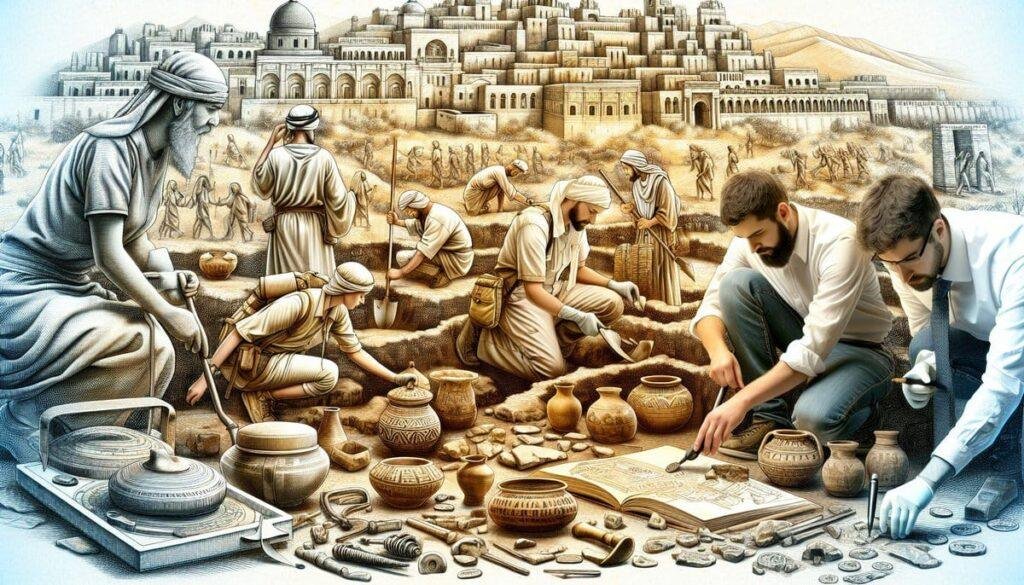What would it be like to step into the shoes of a desert farmer, surrounded by the vast, sunbaked expanse of arid land? Imagine the harshness of the sun bearing down, the challenge of cultivating crops in such conditions, and yet, amidst all this, the application of ancient laws as a guiding principle. It might seem perplexing, but this is the very essence of the Sabbatical laws that govern agricultural practices in the desert. Let’s navigate through the intriguing relationship between these laws and modern farming in the desert, particularly at the Desert Oven Hideaway.

Understanding Sabbatical Laws: A Brief Overview
Sabbatical laws stem from ancient Hebrew tradition. They have their roots deep in the Old Testament, where they were intended not just for spiritual reasons—but also as a means to protect the land and promote community well-being. Here’s a quick breakdown for clarity.
What Are Sabbatical Laws?
These regulations, primarily found in the Book of Leviticus (Leviticus 25:1-7), dictate that the land should rest every seventh year. Imagine it being the land’s version of a vacation! During this year, farmers weren’t allowed to cultivate or harvest crops. Instead, the fields would remain fallow, allowing the soil to rejuvenate. Intriguingly, this wasn’t just about land management; it also provided an opportunity for the marginalized in the community to benefit.
Why Were They Important?
Environmental Benefit: By allowing fields to lie dormant, these laws contributed to soil health. In arid regions, this is crucial for sustainable farming.
Social Justice: The law dictated that whatever grew spontaneously in the fields during the Sabbatical year could be left for the poor and the foreigner. It was a built-in system of support for the less fortunate.
Spiritual Purpose: This break allowed farmers to reconnect with their faith, reflecting on their relationship with God and nature.
The Desert Oven Hideaway: A Unique Context
Now, picture a specific place: the Desert Oven Hideaway. Nestled in the heart of a challenging, yet beautiful desert landscape, it’s more than just a picturesque spot; it’s a study in applying ancient laws in contemporary farming practices.
The Landscape and Its Challenges
Desert farmers face unique challenges due to extreme temperatures and limited water resources. However, the captivating beauty of such surroundings and the opportunity to innovate amidst adversity are what draw many to this region. The terrain’s unforgiving nature requires a distinctive approach to agriculture.
Microclimates
The Desert Oven Hideaway features varying altitudes and per microclimate zones. Understanding these nuances can significantly impact crop choice and yield. Unlike traditional farming, where crops might be planted at regular intervals, desert farming necessitates a more thoughtful approach.
Innovative Farming Techniques
Farming in arid conditions is not merely an exercise in endurance; it requires creativity. Techniques such as rainwater harvesting, drip irrigation, and selecting drought-resistant crops can be found here.
Rainwater Harvesting: Collecting and storing rainwater for irrigation is vital. In regions where rainfall is sparse, any drop counts!
Drip Irrigation: This method delivers water directly to the roots, minimizing evaporation—a critical factor in the desert.
Crop Selection: Farmers here often choose hardy varieties, such as certain legumes and grains adapted to arid climates.
Intersecting Ancient Laws with Modern Techniques
What’s fascinating at the Desert Oven Hideaway is the integration of ancient Sabbatical laws within these innovative techniques.
Resting the Fields
Imagine a farmer allowing a plot of land to rest each seventh year in accordance with these ancient laws. While it sounds counterintuitive, especially in a place where every inch of soil matters, it’s quite strategic.
Benefits of Fallow Land
The resting period can lead to several advantages:
- Soil Fertility: The soil can regain essential nutrients and moisture.
- Biodiversity: Natural flora can return, supporting local ecosystems which thrive on diversity.
- Crop Rotation: By skipping cultivation, farmers can better plan their crops for the next cycle, considering what the land might need.
Balancing Modern Agriculture with Tradition
At Desert Oven Hideaway, farmers maintain a delicate balance between innovation and tradition. Many see the Sabbatical year not as a hindrance but as an opportunity for rejuvenation—physically and spiritually.
The Role of Community
Sabbatical laws also emphasize the aspect of community—and community plays a vital role at the Desert Oven Hideaway. Here’s how.
Local Engagement
During the Sabbatical year, local communities come alive in unique ways. Food is shared, wisdom is exchanged, and relationships are fortified.
Practices of Sharing
Because the fields are left fallow, opportunities arise for communal farming. Neighbors team up, share resources, and engage in collective food production. This fosters a sense of belonging, breaking isolation often found in rural desert living.

Archaeological Insights: A Glimpse into the Past
Understanding the ancient context of Sabbatical laws can bring fresh insights into their relevance today. Archaeological findings shed light on how these practices shaped early agricultural communities.
Ancient Practices
Evidence of agrarian societies adhering to Sabbatical principles includes:
Fallow Fields: Archaeological sites show patterns of land use that align with understanding Sabbatical years.
Storage Facilities: Findings of ancient storage areas indicate practices of communal food reserves, likely used during the fallow years.
Plant Remains: Analysis of ancient plant remains offers insights into crop diversity adapted to local climates over centuries.
Cultural and Theological Significance
The significance of Sabbatical laws extends beyond farming; it taps into broader cultural and religious dimensions.
Biblical Foundations
Referencing the Bible, the laws not only govern agricultural practices but also reflect God’s providential care for creation. They serve as a reminder of stewardship and the importance of sustainability in all aspects of life.
Ethical Dimensions
In today’s context, these ancient laws challenge readers to consider ethical farming practices. Questions arise about food justice, environmental stewardship, and equitable resource distribution—issues that resonate strongly in modern society.
Food Justice: How can modern farmers ensure that all sections of society benefit from agricultural productivity?
Environmental Sustainability: What responsibilities do we hold toward protecting our planet while feeding its populations?
Looking Toward the Future: Lessons from the Desert Oven Hideaway
As we step further into the 21st century, the principles of Sabbatical laws offer a lens through which to view modern farming challenges as well as wider societal ones. What can we learn from this unique interplay of tradition and innovation?
Promoting Sustainable Practices
Desert farmers practicing sustainable methods while adhering to ancient laws can provide a model for diverse agricultural practices globally.
Sustainable Techniques: Techniques that enhance soil health while ensuring productivity resonate with modern environmental movements.
Education and Awareness: Encouraging local youth and new farmers to learn about traditional practices and their benefits can foster a deep appreciation for ancient wisdom.
Bridging Ancient and Modern Wisdom
The significance of connecting ancient laws with current practices can’t be overstated. Traditional wisdom can inform contemporary challenges in agriculture, merging the old with the new in an unexpected yet harmonious way.
Conclusion: Reconnecting with Roots
As you look to the complexities of modern farming in arid areas like the Desert Oven Hideaway, consider how ancient practices can enhance your understanding of sustainability today. The Sabbatical laws remind us that rest, reflection, and community are vital, not merely in agriculture but in how we live our lives in balance with the world.
Reflecting back on the conceptualization of Sabbatical years, you realize it isn’t just about farming. It’s about life, responsibility, and the ethos that underpins our connection to the earth. By revisiting these ancient teachings in the context of contemporary issues, you’re not just learning about agricultural practices; you’re engaging in a conversation that spans millennia, bringing together lessons from generations past to inspire future stewardship of our planet.
So next time you walk through a farming community, picture the rhythm of the land—the resting years, the vibrant blooms, and the hungry mouths it feeds. That’s the dance of sustainability, and it’s a dance worth mastering. After all, just as the land rejuvenates for another cycle, so too can we embrace renewal in our lives.


